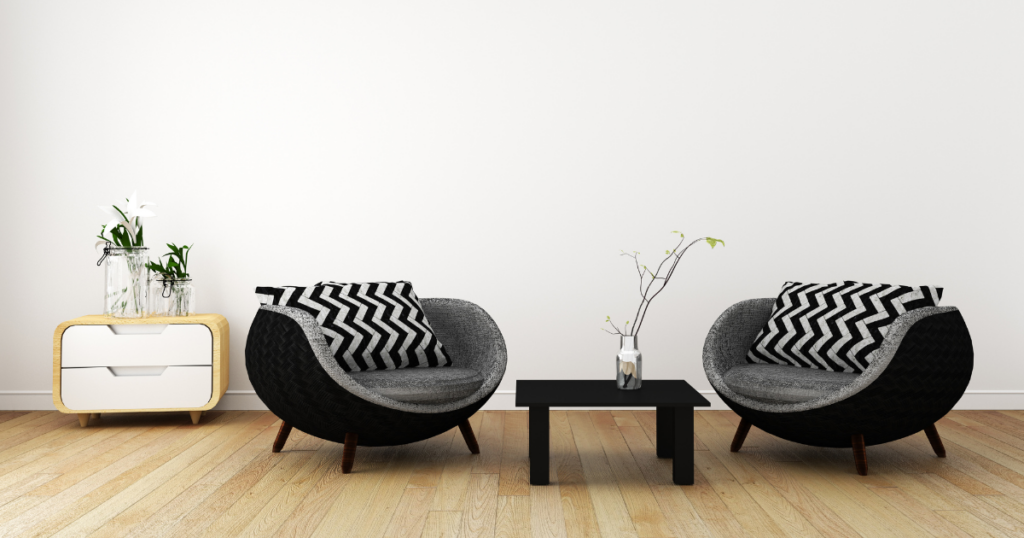
You or someone you may know has a vision loss or low vision diagnosis. Through your interactions, you notice some of the challenges of this diagnosis. So, you are looking for ways to adapt your space. Well, we have good news for you. There are easy ways you can modify your home to make life easier.
Understanding Vision Loss
When a person has vision loss, they have either partial or complete loss of vision. Our chances of developing a vision impairment increase with age because our odds of developing a condition that causes it do, too. Many medical conditions can cause vision loss, such as diabetes, amblyopia (also known as “lazy eye”), cataracts, strabismus, glaucoma, tumors, and macular degeneration, to name a few.
Easy & Affordable Ways to Adapt Your Space for Vision Loss
1. Lighting for Vision Loss
We recommend a few types of lighting when modifying your space for vision loss or low vision. However, it is important to note that what works for one person may only work for some.
Natural Sunlight
Sunlight enhances our mood. It is also the best kind of lighting because it is full-spectrum. However, depending on the time and weather, sunlight fluctuates throughout the day.
Fluorescent Blubs
Fluorescent bulbs are bright and energy-efficient, making them a cost-effective option. We recommend using these for general room lighting, but you should know this lighting cannot be dimmed.
They are recommended for general room lighting but cannot be dimmed.
Incandescent Lights with Bluer Color Temperatures
Unlike fluorescent lights, you can dim incandescent lights. However, you should ensure you use incandescent lights with bluer color temperatures. Although this lighting works well overall, it can produce “hot spots” or a glare. Therefore, the best place for this lighting is a gooseneck lamp for close-up tasks.
LED Lights
You are probably familiar with LED lights. We often see them during the holiday season and throughout our daily lives. These long-lasting lights are great for people with vision issues. LED lights can be very bright and sit on the cooler end of the color spectrum. With their bright nature, limiting the use of LED lights for close-up activities where you need to focus is best.
Lights Recessed Into Ceiling
Recessed ceiling lights look great and are best for spotlighting dark areas without creating a glare. Consider installing this lighting in closets, hallways, and stairs. Although this kind of lighting is more expensive than track lighting, it will not cause the same glare.
2. Glare Control
Glares are especially problematic for people with vision loss. They happen when light reflects and creates a hot spot much brighter than the rest of the room. When there is a glare, our eyes have a harder time adjusting. So, striving to reduce shiny surfaces and control the surrounding light is best.
You may ask yourself, “What can I do to reduce glares?” Although you cannot eliminate all glare, you can limit it by taking the following steps:
- Blinds: Installing mini or vertical blinds gives you maximum control of the sun’s glare.
- Dimmer Switches: You can install dimmer switches to balance the brightness of your lighting.
- Avoid Gloss & Polish: Shiny finishes look great, but they can also cause a glare. Therefore, you should avoid using glossy paints and polishing your furniture or floors.
- Cover Bright Surfaces: Bright surfaces look great but can cause glares. We recommend using tablecloths or other thrown-ons to cover bright surfaces as needed.
3. High Color Contrast
High color contrast is best when adapting your space for someone with low vision or vision loss. You can create high contrast by using light colors with dark or bright colors. Using high contrast will help the person with vision problems locate important items and get oriented in a room.
Here are some ways you can use high color contrast in your space:
- Walls: Let’s say you have white walls. We recommend painting your doors, doorjambs, and baseboards bright colors and using a dark switch plate around your light switches and outlets. This will highlight the room’s boundaries.
- Floors: Solid flooring is more accessible than flooring with a pattern, so carpet, wood, and tile flooring are the best choices.
- Desktops & Tables: Dark desktops are best when doing tasks that involve paper. If the person with vision loss uses a white plate, you should use a dark table or cloth.
- Armchairs: Place a dark armchair against a white wall and a light-colored floor or rug. Dark armchairs make it easier for people with low vision to find the chair.
- Edges: Place brightly colored tape on the edges of your cupboards and drawers. Bright edges will help your loved one know these areas are open, limiting cuts, bumps, and falls.
- Solid Bright Colors: You should use solid bright colors over pastels and dark colors. Solid, bright colors like red, orange, and yellow are more visible.
- Avoid Busy Designs & Decor: Busy designs and decor are inaccessible for people with vision loss.
4. Organization for Vision Loss
Sticking to an organizational system is critical for supporting your loved one with vision loss. Keeping items in a designated spot will help them find things easily.
If something is in the same spot, they will not need to search for it. This will also decrease their need for help, making them more independent. Staying organized by putting objects away in the correct spot can also decrease clutter. Decreasing clutter will reduce their risk of tripping and falling.
Extra Support Is Available
Do you have questions about or want help with home modifications for vision loss? We have you covered. Our care managers can help you adjust to your loved one’s low vision. Please get in touch with us if you would like some help navigating your loved one’s vision loss.
